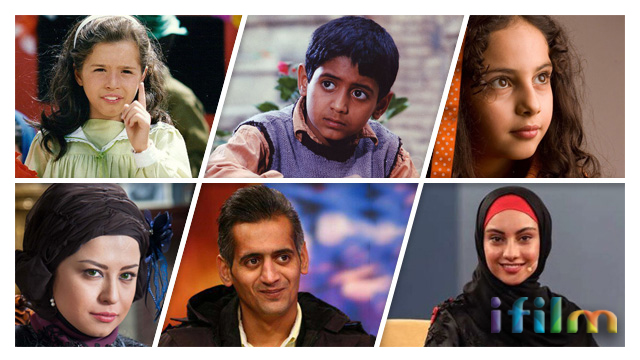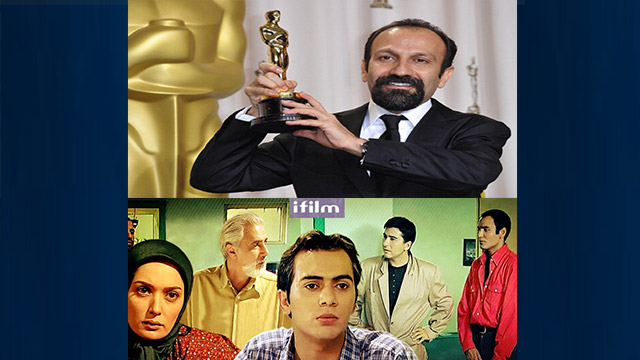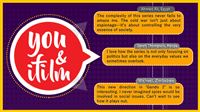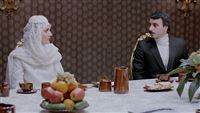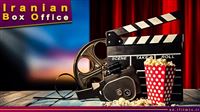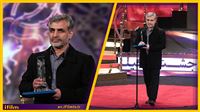Watch iFilm's exclusive report on ‘The Eye of War’, with co-directors Yousef Hatami-Kia and Mehdi Borjian and photographer Saeed Sadeqi.
Below are highlights of the report.
iFilm: The Sacred Defense Week marks the beginning of Iraq’s invasion of Iran 36 years ago and during this week great Iranian war veterans and martyrs are commemorated. On this occasion, a few films have hit the screens like ‘The Eye of War’ – a different documentary.
Hatami-Kia: The truth is that me and Mehdi Borjian did our best to try to introduce Saeed and his colleagues to the people.
Borjian: The new generation…let me talk about my generation. We made this movie for our own generation. We wanted to introduce Sadeqi.
Who took those photos you see in the streets? Who recorded those moments?
Sadeqi: I like the photos I took of the war not because I like photos of the war. I like the people who fought the war, the ones we lost. They’re not among us anymore.
Hatami-Kia: When we had it screened at the festival, we realized that it was warmly received. We realized that the people were able to click with it. Our documentary is an honest narrative of the war.
Borjian: Presenting this documentary was a kind of reminder to our generation that these people still exist and this is the situation they’re dealing with.
Hatami-Kia: We decided to do everything we can to introduce Saeed Sadeqi and his colleagues to the people. So, they let us screen it at the festival. We say this in our documentary, too.
They only remember these people during the Sacred Defense Week. It’s as if they don’t exist during the rest of the year.
Borjian: This movie has everything. It has laughter, sadness, sorrow and pain. I know that my own generation will be able to make contact with it. I think these movies have to be screened so our generation can see them.
Hatami-Kia: But they become noticeable during this one week. Unfortunately, we too screened the movie during the Sacred Defense Week. But I consider this an auspicious event. It was a good thing for us.
iFilm: This film was made by two directors, but the question is could this film have been made with only one director?
Borjian: First of all I have to say that we have very similar ideas.
Hatami-Kia: And I don’t think we could have done it without the help of the other.
Borjian: From the first day, two people were responsible for the foundation of this movie.
Hatami-Kia: But I feel that this documentary needed this because controlling Saeed Sadeqi is a difficult thing to do.
Borjian: It wasn’t possible for us to do it without the help of the other.
Hatami-Kia: Everyone who knows Saeed would ask us whether we’d made a documentary about him. And that’s even before they’d seen the documentary. We’d say yes. This itself is good. It’s good.
Borjian: And that was the reason for the two of us to take on this project together. Saeed is uncontrollable.
Hatami-Kia: It’s difficult to control him.
iFilm: There are many films made about the war but we can hardly find a film about war photographers, those who are actually the eye of the war.
Hatami-Kia: Back then, there was talk of…I can’t say we felt it was a duty. We felt we have a concern, that if we don’t make this documentary, we won’t be able to think about anything else.
Borjian: The Sacred Defense consists of many things. Many parts of the Sacred Defense haven’t been covered the way they should have been.
Hatami-Kia: The goal was to truly discuss the war.
Borjian: The theme of photographers on the battlefield was something that had not been covered as much as it should have been.
Hatami-Kia: We were looking for a subject with only an idea that wasn’t totally thought through.
Borjian: A war photographer is a soldier in a battlefield whose weapon is a camera. He doesn’t have anything to defend himself with. He’s only recording something; the exact opposite of the soldier who’s fighting.
Hatami-Kia: And it turned out to be what Medi just said.
Borjian: Having access to this person was very appealing to us.
Hatami-Kia: We had an initial plan, then we wanted it to be artistic. But then we reached the point that it should be about a photographer, seeing the war from the eye of the photographer. Because we felt that…I mean we couldn’t remember a movie that looked at the war through the eyes of a photographer.
Borjian: And we knew we had lots to say, artistically speaking.
Hatami-Kia: A photographer can say a thousand things with only a photo. This was interesting to us. We wanted to look at the war from this point of view.
Borjian: That was the reason we chose him.
iFilm: The story of this film revolves around a photographer called Saeed Sadeqi. You might not have heard his name before but if you have seen photos of the Sacred Defense, you have definitely seen some of his shots.
Sadeqi: I am Saeed Sadeqi. I was born in November, 1953. But I have to say the day I picked up a camera was the day I was born.
I war began as soon as I was discovering what a camera was, what a photo subject was. I didn’t know I would be so caught up in those moments. Even now, after 30 years, I can’t detach myself from those moments and people. I felt I was lost. I felt I had to find myself again. That’s why I started looking for the people in my photos.
iFilm: ‘The Eye of War’ recounts the story of a war photographer who is looking for those he had taken photos of during the war.
Borjian: This was Sadeqi’s own idea.
Hatami-Kia: We thought it was just another project for a photographer.
Borjian: We were working with Mr. Sadeqi. We were filming him when he said he was doing such a thing.
Hatami-Kia: We kept moving forward and that’s how this turned to be the subject of our story. We thought it was very appealing. It was so appealing that they proposed we make a feature film about it.
Borjian: He’d found three or four of them. He’d taken photos of them too.
Hatami-Kia: As we were moving forward with the project, something very sad happened and it because the main theme of our story.
Borjian: Naturally, it’s interesting for you to go back and see the people from your past.
Hatami-Kia: We realized Saeed Sadeqi and the people in his photos have been forgotten.
Borjian: It was the same for this project. But well, content-wise, it was very important and it was dealing with the sociology of these people.
Hatami-Kia: They’re the ones looking for each other. A war photographer is looking for the people he took photos of. Is anyone else looking for them? No! They’re the ones looking for each other.
It’s as if they’re calling their teammates to gather round again, because they’re ignored most of the time. They’re only noticed during the Sacred Defense Week. No one looks for them during the rest of the year.
We laughed, cried and went silent with Saeed and he really did convey all these feelings to us.
AI/AI

